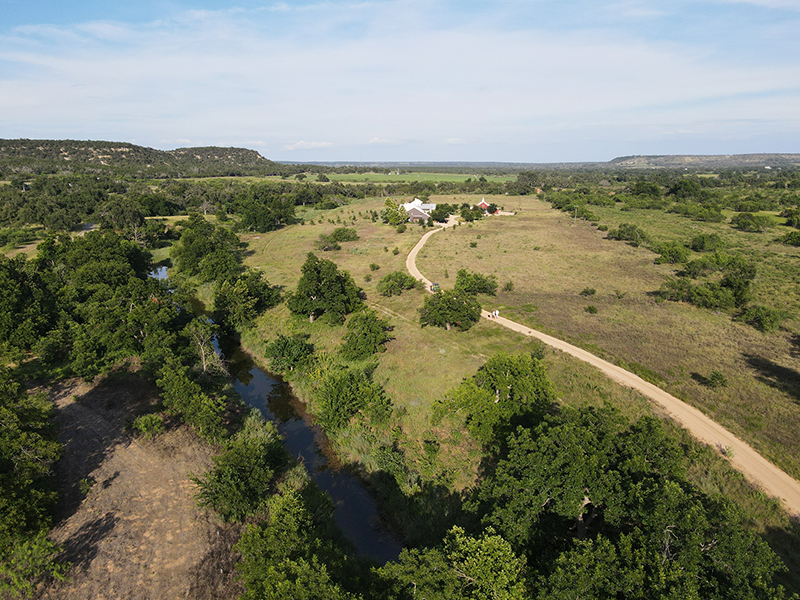In 2009, Diana and Charlie Armbrust purchased land in Gillespie County. They had seen and were struck by several immaculately maintained properties. So, when the Armbrusts bought their place, they decided, “to make it look like a golf course. That’s what I thought Hill Country land was supposed to look like,” recalls Diana.
After their house was built, roads constructed, and a groundwater well installed, the Armbrusts retired from their Houston-based careers and moved to the Hill Country. They removed nearly all the woody vegetation except for the oak trees and landscaped around the house. They used what Diana refers to as a “big-city, gardening mentality” on the former rangeland. Tidy and manicured.
Diana and Charlie started to take regular walks around the property. The walks were notably quiet. “We saw few birds and insects, no rabbits. It didn’t seem right, but we didn’t know what the problem was,” says Charlie, an avid hunter. “It was really just a feeling.”
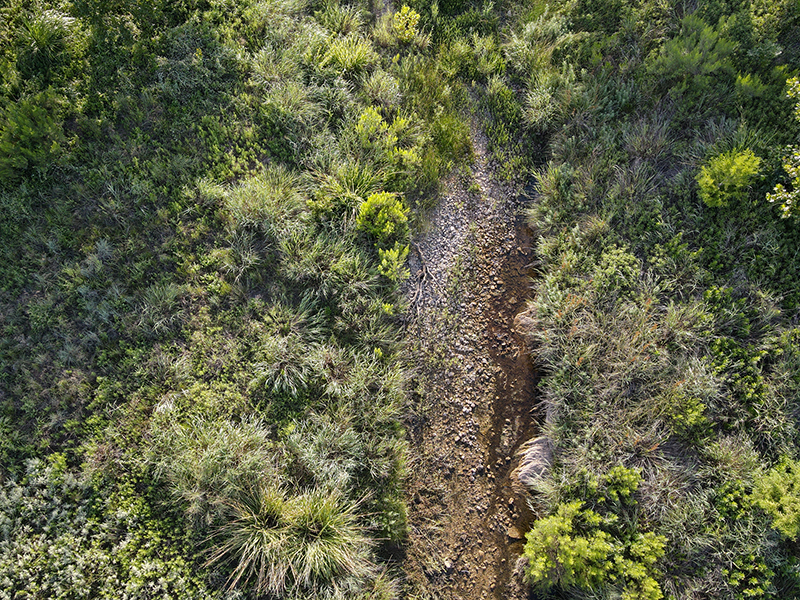
Both Diana and Charlie grew up in big cities, Salt Lake City and Houston, respectively. They met and lived in Boston, then Chicago, and Houston. Diana worked in investment banking, Charlie in executive management. “After forty years surrounded by cement and traffic, we were ready for a change,” Charlie explains.
Both had grown up visiting grandparents’ farms and yearned for a more rural, rooted existence. Their search for a place started along the Guadalupe River. They wanted to be down in a valley, by running water, and relatively close to a vibrant community. Ultimately, Diana and Charlie found their dream place just north of Fredericksburg along Crabapple Creek.
Replicating what they had seen on some other properties, the Armbrusts cleared the mesquite, mountain cedar, and nameless shrubs. They mulched some of the fallen trees, then piled and burned the rest. With the land cleared, they started walking the property and struggled with the quiet.
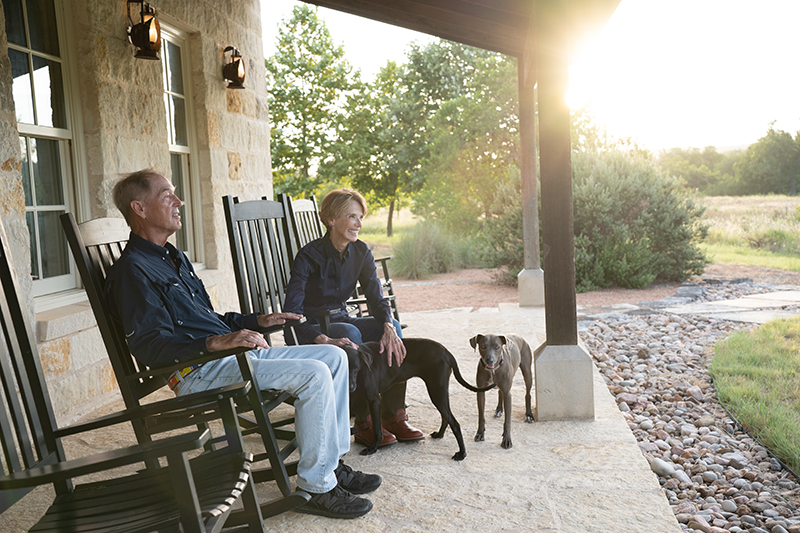
Eager to understand why they were not hearing and seeing much wildlife, they set out to learn. Diana had seen an ad in the Fredericksburg Standard for something called the Texas Master Naturalists. She decided to enroll in the local chapter of this statewide program. Diana and her new classmates spent months learning through coursework, field trips, and service projects about Hill Country geology, plants, animals, ecology, and management practices.
She gained ecological knowledge as well as a new network of peers. Diana connected with state agencies like Texas A&M Forest Service, businesses like Native American Seed, and fellow landowners interested in natural resources management. Through the Texas Master Naturalist program, she and Charlie also met Steve Nelle.
—
For nearly 50 years, Steve Nelle has supported Texas farmers, ranchers, and other land managers towards their natural resource management goals. Nelle’s career has centered on his knowledge of plants and his ability to integrate livestock and wildlife management. “My knowledge of plants has always been my foot in the door,” Nelle says. “Landowners typically want to know what’s out there.”
Nelle knows hundreds of species of grasses, forbs, sedges, shrubs, and trees — plants that grow down in the South Texas brush country, up on the High Plains, and across the Edwards Plateau. Through his humility, sincere interest in a landowner goals, and willingness to walk with them through pastures, Nelle has inspired countless landowners to become more curious about their surroundings.
Over the years, Nelle has developed a unique and compelling interpretation of land stewardship. Land stewardship, he affirms, is fundamentally a connection to and an understanding of the land. “It’s when a landowner is grafted into the land, and the land grafted to them,” he says. Through decades working at the Soil Conversation Service (now the USDA Natural Resources Conservation Service), Nelle learned this from a distinct set of landowners. “Stewardship is a deeply held, inner connection that inspires us to be responsible caretakers.” It’s fundamentally about our values, motives, and connection.
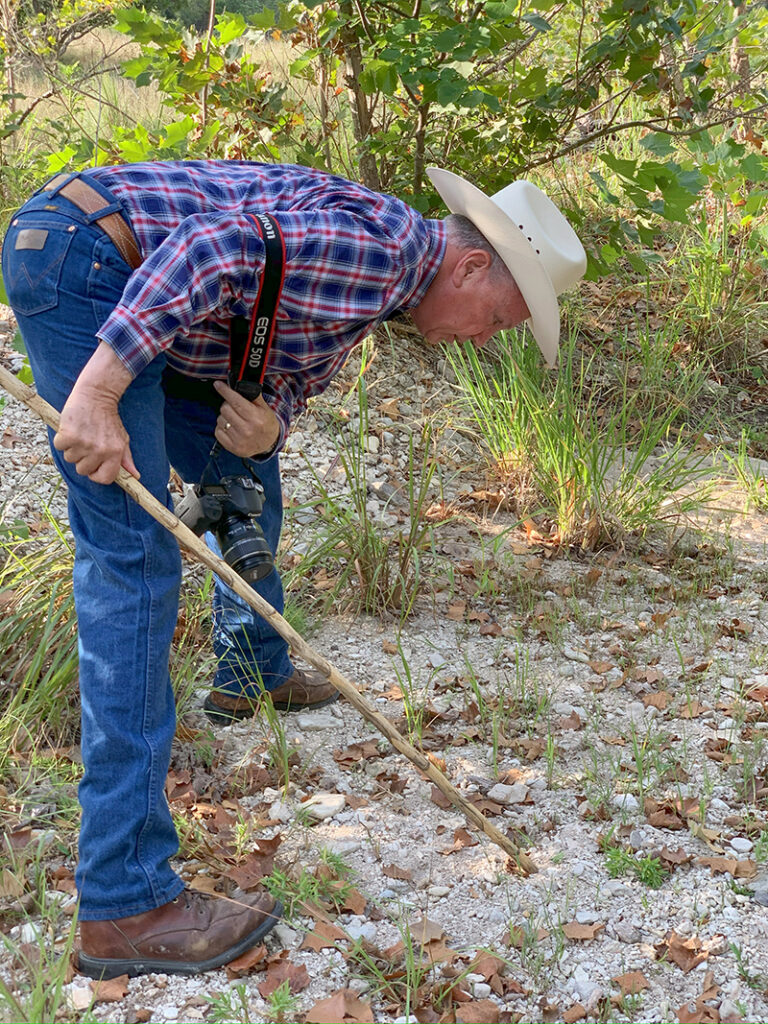
Nelle often finds new Hill Country landowners focused more on tools and management practices, less the stewardship connection. Eager, they see their new land as a project to be completed with a checklist of management practices (e.g. brush control, seeding, shredding, spraying). “If you see the land as a project, you may be anxious to go in fast-forward mode. A lot of us don’t like twiddling our thumbs — we want to do stuff. But we need to unlearn that,” Nelle cautions.
He encourages new landowners to spend the first year enjoying the land for what it is: learn the plants and animals, how rainwater flows across the property, where there is erosion, and how the land works. “Teach yourself by your own curiosity and observations. Spend time walking the land without a checklist of things to do.” Slow down. Good land stewardship, Nelle elaborates, “is intelligent tinkering that includes flexibility, creativity, perseverance, and passion. And you need some rain.” Once Hill Country residents understand the land and develop their own stewardship goals, then learn the tools and management practices, and how to use them constructively toward the objectives.
—
After connecting with Nelle, Diana and Charlie Armbrust began to study their land and to create a plan for restoring the native plant diversity and wildlife habitat. Diana made a bulletin board to display and label the native grasses she collected. Over time, they learned the nuances of the land — where the soils and plant communities changed across the property. They learned what a browse line was and how an overabundance of white-tailed deer was depleting native tree seedlings and saplings. They visited other landowners’ properties, attended educational workshops, joined the Native Plant Society of Texas, and started to conduct and learn from small experiments.
After several tree-planting failures, for example, Diana started to focus more on protecting what was already there naturally. “This is a dry, tough environment. If nature planted it, it’s probably happy growing where it is,” Diana says. She has installed caging around many live oak, pecan, and elm seedlings to protect them from browsing deer. Diana has also had success growing smaller woody species such as Redbud, Mexican buckeye, and Goldenball Leadtree from seed she has carefully collected.
Restoring land in the Hill Country is no easy task. In many places, there’s a scarcity of topsoil and an excess of native and exotic, non-native deer species impacting the vegetation. There are also the feral hogs, searing droughts, destructive floods, and the occasional, show-stopping ice storm. For the Armbrusts, restoration has been an evolution.
“It wasn’t an epiphany. We just saw what others had done and wanted to start the journey,” Charlie recalls. Thinking back to how his executive experience has assisted in the journey of land stewardship and restoration, Charlie gravitates towards R&D. “Think big, test small. If it works, do more. If it doesn’t, do less. Learn from those small experiments and see what works well on your property,” Charlie offers.
The Armbrusts have experimented with a variety of tools and management practices — managing infestations of non-native, invasive plants (e.g. malta-star thistle, KR Bluestem), building rows of rocks and transplanting native bunchgrasses to manage hillside erosion, constructing a mobile watering system attached to their UTV, and seeding a variety of native grass and wildflower species.

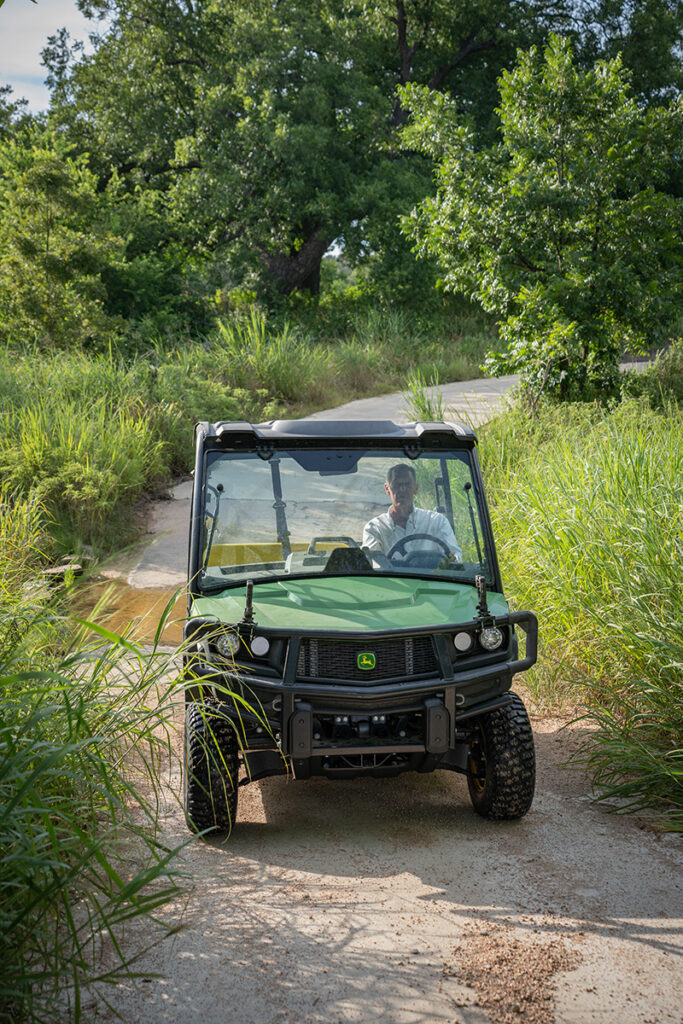
They have also grown more patient. In fact, there are still parts of their property that they have not yet started to restore. “It takes a lot of effort to restore a degraded piece of land,” Charlie says. “And you don’t get your results overnight.”
Diana agrees. “It’s a nonlinear process. You need to be mentally prepared, especially when you’re just getting started. It’s not like planting a lawn or garden.”
Instead, things happen at nature’s pace, not ours. Both shared their early discontent when a field that they had planted with native grass seeds was quickly overtaken by prickly poppy. Diana recalls, “It was a nightmare. But then, after a couple of years, the native grasses started to establish.”
The Armbrusts have come to terms with nature’s cadence being different from a corporate calendar. “When working with Mother Nature, she’s in charge, not you. In the Hill Country, there’s a lot of variability that you need to expect and work with — drought, flooding, and hard freezes,” says Charlie. “Your plans have to account for this variability.”
They’ve been stewarding their place now for ten years. Recovering, their property is now a healthy mix of hardwood forest, open savannah, and riparian habitat along Crabapple Creek. Assessing the past decade, Charlie confirms, “There are no instant solutions. It’s a fun process of discovery and seeing the success is so rewarding.” Diana adds, “And nobody does this alone. There are so many great resources, so many great examples to visit and learn from.”
When asked their favorite plant, each struggles. Charlie loves the height of the native big-bluestem bunchgrasses, the red and golden-brown hues of little bluestem during the fall, and hearty seedheads of yellow Indian grass. “The diversity of grasses and wildflowers, it’s spectacular,” he says. For Diana, “Eastern gamagrass is my therapy grass. Whenever I’m frustrated, I go out and pick and broadcast the seed heads,” which look like miniature corn cobs. And she cannot get enough of the bright yellow puffballs of a flowering Goldenball Leadtree.
Reflecting on his exchanges with the Armbrusts over the years, Nelle has much admiration for the couple. “They acknowledged not having all the answers, rolled their sleeves up, and learned all they could. Not just from the Texas Master Naturalists and resource professionals, but also from other landowners too,” Nelle says. “When landowners share with each other what they did on the land, the mistakes, what worked and how they did it, that’s way better than me going out to talk to them.”
The Armbrusts joke their property is just big enough so that they don’t bump into each other. But it’s clear that this has been a shared undertaking of perseverance and growth. “Seeing the results over time, it’s been really satisfying,” Charlie says. “With all these native grasses and trees, we’ve improved the soil and are helping rainwater find the aquifer. In a modest way, we’re contributing to that.”
Now, when they walk the property, it’s a vibrant experience. “We see wrens, flycatchers, Painted Buntings, chickadees, Tufted Titmouse, dickcissels, and a gazillion humming birds,” Diana says, smiling. “And we can’t forget the insects. Butterflies are everywhere, along with buzzing native bumble bees and even fireflies. That’s something we really enjoy.”


